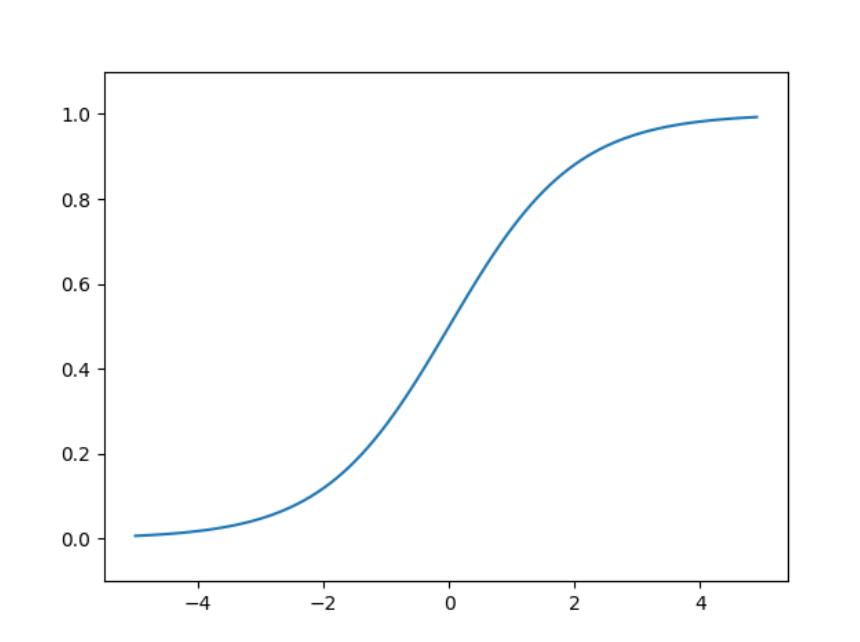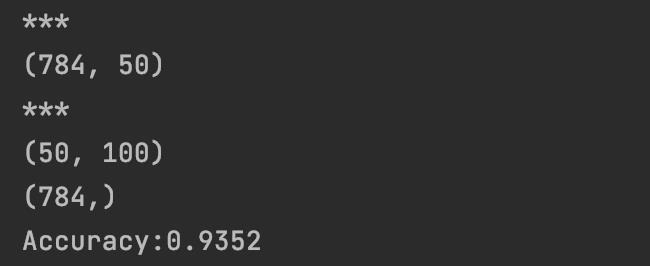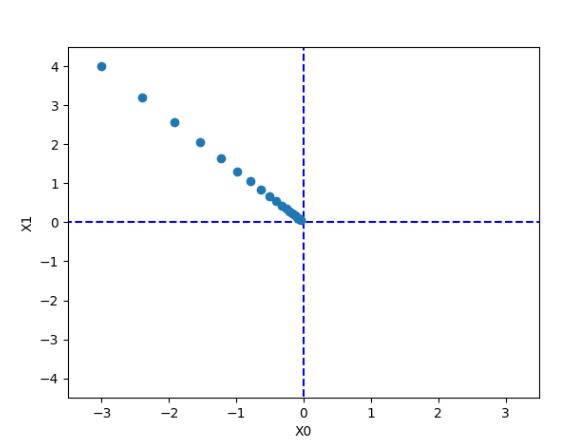《深度学习入门 基于Python的理论与实现》书中代码笔记
Posted 海轰Pro
tags:
篇首语:本文由小常识网(cha138.com)小编为大家整理,主要介绍了《深度学习入门 基于Python的理论与实现》书中代码笔记相关的知识,希望对你有一定的参考价值。
源码笔记【仅为个人笔记记录】
第三章
sigmoid函数

# coding: utf-8
import numpy as np
import matplotlib.pylab as plt
def sigmoid(x):
return 1 / (1 + np.exp(-x))
X = np.arange(-5.0, 5.0, 0.1)
Y = sigmoid(X)
plt.plot(X, Y)
plt.ylim(-0.1, 1.1)
plt.show()

阶跃函数

# coding: utf-8
import numpy as np
import matplotlib.pylab as plt
def step_function(x):
return np.array(x > 0, dtype=int)
X = np.arange(-5.0, 5.0, 0.1)
Y = step_function(X)
plt.plot(X, Y)
plt.ylim(-0.1, 1.1) # 指定图中绘制的y轴的范围
plt.show()

ReLU函数

# coding: utf-8
import numpy as np
import matplotlib.pylab as plt
def relu(x):
return np.maximum(0, x)
x = np.arange(-5.0, 5.0, 0.1)
y = relu(x)
plt.plot(x, y)
plt.ylim(-1.0, 5.5)
plt.show()

MNIST数据集的显示
# coding: utf-8
import numpy as np
from dataset.mnist import load_mnist
from PIL import Image
import sys
import os
sys.path.append(os.pardir) # 为了导入父目录的文件而进行的设定
def img_show(image):
pil_img = Image.fromarray(np.uint8(image))
pil_img.show()
(x_train, t_train), (x_test, t_test) = load_mnist(flatten=True, normalize=False)
# 读取训练集中的第一张图片
img = x_train[0]
# 读取训练集中的第一张图片的标签
label = t_train[0]
print(label) # 5
print(img.shape) # (784,)
img = img.reshape(28, 28) # 把图像的形状变为原来的尺寸
print(img.shape) # (28, 28)
img_show(img)


使用已训练好的参数进行手写数字图片的预测
# coding: utf-8
import numpy as np
import pickle
from dataset.mnist import load_mnist
from common.functions import sigmoid, softmax
import sys
import os
sys.path.append(os.pardir) # 为了导入父目录的文件而进行的设定
# 获取训练、测试数据
# x:图片
# t:标签
def get_data():
(x_train, t_train), (x_test, t_test) = load_mnist(normalize=True, flatten=True, one_hot_label=False)
return x_test, t_test
# 获取已训练好的网络参数
def init_network():
with open("sample_weight.pkl", 'rb') as f:
network = pickle.load(f)
return network
# 进行图片的预测
def predict(network, x):
# 参数设置
W1, W2, W3 = network['W1'], network['W2'], network['W3']
b1, b2, b3 = network['b1'], network['b2'], network['b3']
# 输入 + 两层层隐藏层 + 输出层
# 输入 1 * 784 (784 = 28 * 28)
# 第一层 50个神经元 784 * 50
# 第二层 100个神经元 50 * 100
# 输出层 10个神经元 100 * 10
a1 = np.dot(x, W1) + b1
z1 = sigmoid(a1)
a2 = np.dot(z1, W2) + b2
z2 = sigmoid(a2)
a3 = np.dot(z2, W3) + b3
y = softmax(a3)
# 返回一个1*10的数组
# 表示10个分类对应的概率
return y
x, t = get_data()
network = init_network()
print("***")
print(network['W1'].shape)
print("***")
print(network['W2'].shape)
accuracy_cnt = 0
print(x[0].shape)
for i in range(len(x)):
y = predict(network, x[i])
p= np.argmax(y) # 获取概率最高的元素的索引
if p == t[i]:
accuracy_cnt += 1
print("Accuracy:" + str(float(accuracy_cnt) / len(x)))

使用已训练好的参数进行手写数字图片的预测(批处理)
区别:每次预测是使用多个图片同时进行预测
# coding: utf-8
import sys, os
sys.path.append(os.pardir) # 为了导入父目录的文件而进行的设定
import numpy as np
import pickle
from dataset.mnist import load_mnist
from common.functions import sigmoid, softmax
def get_data():
(x_train, t_train), (x_test, t_test) = load_mnist(normalize=True, flatten=True, one_hot_label=False)
return x_test, t_test
def init_network():
with open("sample_weight.pkl", 'rb') as f:
network = pickle.load(f)
return network
def predict(network, x):
w1, w2, w3 = network['W1'], network['W2'], network['W3']
b1, b2, b3 = network['b1'], network['b2'], network['b3']
a1 = np.dot(x, w1) + b1
z1 = sigmoid(a1)
a2 = np.dot(z1, w2) + b2
z2 = sigmoid(a2)
a3 = np.dot(z2, w3) + b3
y = softmax(a3)
return y
x, t = get_data()
network = init_network()
batch_size = 100 # 批数量
accuracy_cnt = 0
for i in range(0, len(x), batch_size):
x_batch = x[i:i+batch_size]
y_batch = predict(network, x_batch)
p = np.argmax(y_batch, axis=1)
accuracy_cnt += np.sum(p == t[i:i+batch_size])
print("Accuracy:" + str(float(accuracy_cnt) / len(x)))
# Accuracy:0.9352
第四章
损失函数
均方误差

交叉熵误差

导数(一维)
# coding: utf-8
import numpy as np
import matplotlib.pylab as plt
def numerical_diff(f, x):
h = 1e-4 # 0.0001
return (f(x+h) - f(x-h)) / (2*h)
def function_1(x):
return 0.01*x**2 + 0.1*x
def tangent_line(f, x):
d = numerical_diff(f, x)
print(d)
y = f(x) - d*x
return lambda t: d*t + y
x = np.arange(0.0, 20.0, 0.1)
y = function_1(x)
plt.xlabel("x")
plt.ylabel("f(x)")
tf = tangent_line(function_1, 5)
y2 = tf(x)
plt.plot(x, y)
plt.plot(x, y2)
plt.show()

# coding: utf-8
# cf.http://d.hatena.ne.jp/white_wheels/20100327/p3
import numpy as np
import matplotlib.pylab as plt
from mpl_toolkits.mplot3d import Axes3D
def _numerical_gradient_no_batch(f, x):
h = 1e-4 # 0.0001
grad = np.zeros_like(x)
for idx in range(x.size):
tmp_val = x[idx]
x[idx] = float(tmp_val) + h
fxh1 = f(x) # f(x+h)
x[idx] = tmp_val - h
fxh2 = f(x) # f(x-h)
grad[idx] = (fxh1 - fxh2) / (2*h)
x[idx] = tmp_val # 还原值
return grad
def numerical_gradient(f, X):
if X.ndim == 1:
return _numerical_gradient_no_batch(f, X)
else:
grad = np.zeros_like(X)
for idx, x in enumerate(X):
grad[idx] = _numerical_gradient_no_batch(f, x)
return grad
def function_2(x):
if x.ndim == 1:
return np.sum(x**2)
else:
return np.sum(x**2, axis=1)
def tangent_line(f, x):
d = numerical_gradient(f, x)
print(d)
y = f(x) - d*x
return lambda t: d*t + y
if __name__ == '__main__':
x0 = np.arange(-2, 2.5, 0.25)
x1 = np.arange(-2, 2.5, 0.25)
X, Y = np.meshgrid(x0, x1)
X = X.flatten()
Y = Y.flatten()
grad = numerical_gradient(function_2, np.array([X, Y]) )
plt.figure()
plt.quiver(X, Y, -grad[0], -grad[1], angles="xy",color="#666666")#,headwidth=10,scale=40,color="#444444")
plt.xlim([-2, 2])
plt.ylim([-2, 2])
plt.xlabel('x0')
plt.ylabel('x1')
plt.grid()
plt.legend()
plt.draw()
plt.show()

使用梯度下降求解 f ( x ) = x 0 2 + x 1 2 f(x) = x_0^2 + x_1^2 f(x)=x02+x12的最小值
# coding: utf-8
import numpy as np
import matplotlib.pylab as plt
from gradient_2d import numerical_gradient
def gradient_descent(f, init_x, lr=0.01, step_num=100):
x = init_x
x_history = []
for i in range(step_num):
x_history.append( x.copy() )
grad = numerical_gradient(f, x)
x -= lr * grad
return x, np.array(x_history)
def function_2(x):
return x[0]**2 + x[1]**2
init_x = np.array([-3.0, 4.0])
lr = 0.1
step_num = 20
x, x_history = gradient_descent(function_2, init_x, lr=lr, step_num=step_num)
plt.plot( [-5, 5], [0,0], '--b')
plt.plot( [0,0], [-5, 5], '--b')
plt.plot(x_history[:,0], x_history[:,1], 'o')
plt.xlim(-3.5, 3.5)
plt.ylim(-4.5, 4.5)
plt.xlabel("X0")
plt.ylabel("X1")
plt.show()

个人理解
求一个函数在某一点的斜率
比如 f ( x ) = 0.01 x 2 + 0.1 x f(x) = 0.01x^2 + 0.1x f(x)=0.01x2+0.1x在点 x = 5 x=5 x=5的斜率
# coding: utf-8
import numpy as np
import matplotlib.pylab as plt
# 计算f(x)在x的斜率
def numerical_diff(f, x):
h = 1e-4 # 0.0001
return (f(x+h) - f(x-h)) / (2*h)
# 定义f(x)
def function_1(x):
return 0.01*x**2 + 0.1*x
# 返回f(x)在点x的切线方程
def tangent_line(f, x):
# d:斜率
d = numerical_diff(f, x)
print(d)
# y:偏移量
y = f(x) - d*x
return lambda t: d*t + y
x = np.arange(0.0, 20.0, 0.1)
y = function_1(x)
plt.xlabel("x")以上是关于《深度学习入门 基于Python的理论与实现》书中代码笔记的主要内容,如果未能解决你的问题,请参考以下文章
《深度学习入门:基于Python的理论与实现》高清中文版PDF+源代码
《深度学习入门:基于Python的理论与实现》高清中文版PDF+源代码
分享《深度学习入门:基于Python的理论与实现》高清中文版PDF+源代码
分享《深度学习入门:基于Python的理论与实现 》中文版PDF和源代码
《深度学习入门基于Python的理论与实现》pdf下载在线阅读,求百度网盘云资源
对比学习资料《深度学习入门:基于Python的理论与实现》+《深度学习原理与实践》+《深度学习理论与实战基础篇》电子资料